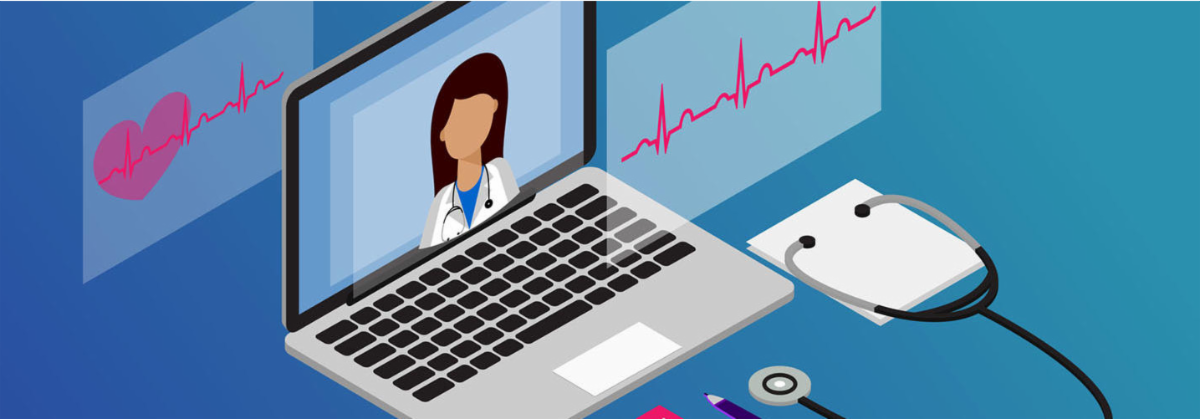 I remember vividly the first time I used Skype in my work life to communicate with a colleague at a distance. While it was kinda cool to be able to see him, the video was jerky with weird delays, and I felt like I had to keep repeating myself, or asking him to, as the audio broke up or the whole thing just froze.
I remember vividly the first time I used Skype in my work life to communicate with a colleague at a distance. While it was kinda cool to be able to see him, the video was jerky with weird delays, and I felt like I had to keep repeating myself, or asking him to, as the audio broke up or the whole thing just froze.
We’ve come such a long way since then, where FaceTime and Zoom are the order of the day. Still while the incorporation of telemedicine into our every day lives has long been envisioned, it most certainly has become a reality with COVID-19. I’ve helped many clients set up for this new type of medical visit, but I had my own personal encounter with it just last week and wanted to share my experience.
- In an effort to practice what I preach, I spent 15 minutes before my scheduled appointment preparing for the encounter. I’d started a new medication that was prescribed at my last pre-COVID-19 office visit, and so I wrote down what response I’d had to it. I did have one “side effect” of sorts that seemed worth mentioning, so I wrote that down on my prep sheet as well. I also noted the two questions I had so I wouldn’t forget them.
- Ten minutes before it was time for my appointment, I followed the instructions I received to log in. Since this was my first telemedicine “office visit,” I confess to wondering if I really was “in the waiting room” or lost in the ethers. But after a few minutes the voice of my beloved nursing assistant who usually checks me in at the office came over my lap top audio.
Back in the day, I have various recollections of sitting in a waiting room for an appointment for far too long before I asked a receptionist where I was in the queue. A telemedicine appointment is no different, so it can be helpful to have the ability to call or email to make sure you’re actually logged in. I have a land line and a cellphone, and I could have called the office as I have for our clients, but finding out how to do that before the visit would be helpful.
- After checking me in, with the exception of not getting weighed (perhaps a blessing – hello Quarantine 15!) or having my blood pressure checked, it might be helpful if those measurements are important to your health, and you have home monitors to document them before your appointment to report them as you get checked in.
My medical assistant advised that the doctor would be with me shortly. And then…a blank screen, but it did say I was next in line. When my doctor “arrived” there was a bit of adjusting (can you see me, can you hear me?) we had to play with, but then we got down to business.
In many ways, this felt not so different from a regular visit because I’ve been seeing this physician for some time. We talked about my response to the medication, reviewed some testing results that had been ordered at my last visit, and how I was feeling over all. On the other hand, if you don’t know the physician you’re seeing well, it might feel less comfortable.
The technology wasn’t flawless. Like many patients when we’re in an encounter and don’t fully understand something a doctor is saying to us, I was reluctant to interrupt the appointment to convey that the technology wasn’t working optimally. I wasn’t sure if I’d missed something but fortunately for the most part I could hear my doctor, even though I couldn’t see her continuously. I did ask for a review and clarification of our next steps toward the end of the appointment, a good step for any medical encounter. But as with any situation where we don’t feel at ease, the sense of feeling less than empowered in this new medium is not just possible, but probable.
Will telemedicine work for every encounter? Definitely not. But the fact is it allowed me to continue my care without having to drive to an office and be exposed to corona virus was a win for me, and I know I’ll regain some of my sense of autonomy the next time. What I did observe is that both my doctor and I seemed to be working harder at listening to each other. Maybe, just maybe one thing that telemedicine will enhance is that the age old skill of deep listening that has had a tendency to get lost in the age of 5 minute appointments.
If you’ve had a telemedicine experience, I’d love to hear about it. Are there any tricks you’ve learned you can share? Feel free to comment at the end of this post and we’ll all learn from each other!
